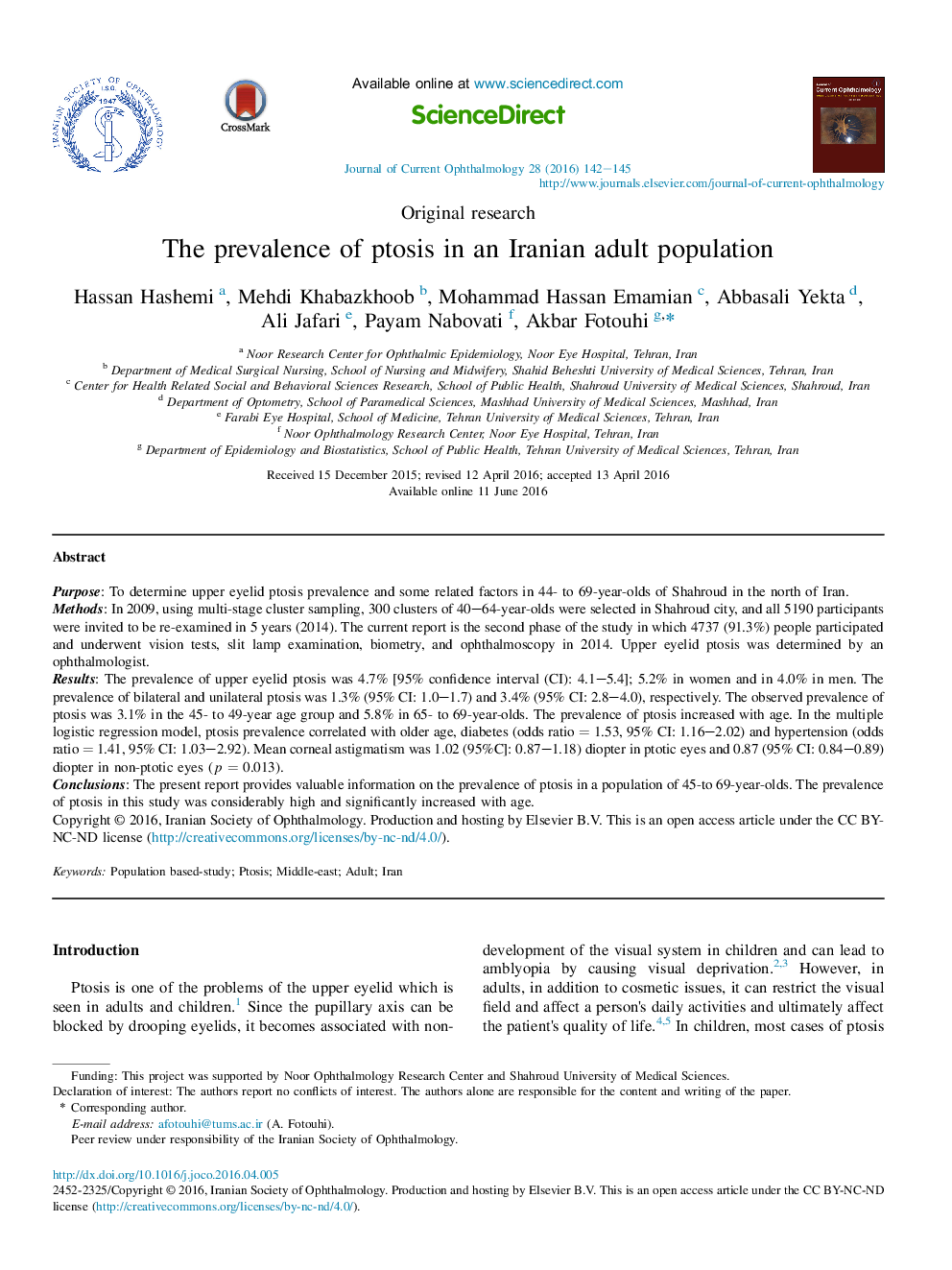| Article ID | Journal | Published Year | Pages | File Type |
|---|---|---|---|---|
| 4022859 | Journal of Current Ophthalmology | 2016 | 4 Pages |
PurposeTo determine upper eyelid ptosis prevalence and some related factors in 44- to 69-year-olds of Shahroud in the north of Iran.MethodsIn 2009, using multi-stage cluster sampling, 300 clusters of 40–64-year-olds were selected in Shahroud city, and all 5190 participants were invited to be re-examined in 5 years (2014). The current report is the second phase of the study in which 4737 (91.3%) people participated and underwent vision tests, slit lamp examination, biometry, and ophthalmoscopy in 2014. Upper eyelid ptosis was determined by an ophthalmologist.ResultsThe prevalence of upper eyelid ptosis was 4.7% [95% confidence interval (CI): 4.1–5.4]; 5.2% in women and in 4.0% in men. The prevalence of bilateral and unilateral ptosis was 1.3% (95% CI: 1.0–1.7) and 3.4% (95% CI: 2.8–4.0), respectively. The observed prevalence of ptosis was 3.1% in the 45- to 49-year age group and 5.8% in 65- to 69-year-olds. The prevalence of ptosis increased with age. In the multiple logistic regression model, ptosis prevalence correlated with older age, diabetes (odds ratio = 1.53, 95% CI: 1.16–2.02) and hypertension (odds ratio = 1.41, 95% CI: 1.03–2.92). Mean corneal astigmatism was 1.02 (95%C]: 0.87–1.18) diopter in ptotic eyes and 0.87 (95% CI: 0.84–0.89) diopter in non-ptotic eyes (p = 0.013).ConclusionsThe present report provides valuable information on the prevalence of ptosis in a population of 45-to 69-year-olds. The prevalence of ptosis in this study was considerably high and significantly increased with age.
